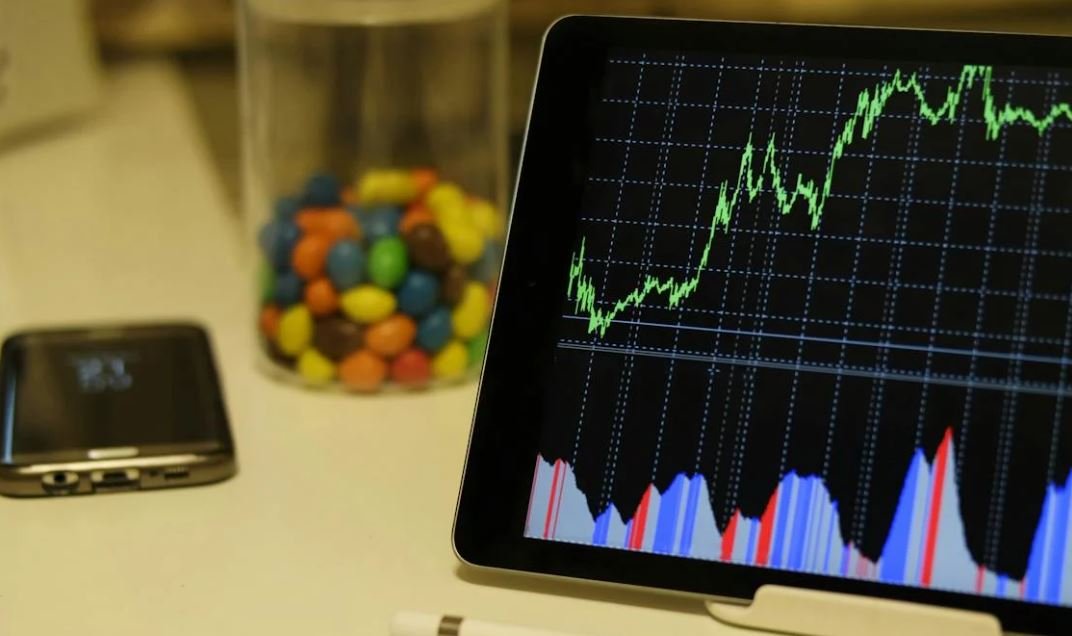Music Note Emoji
Music has always been a universal language of expression, an art form that transcends cultural and linguistic barriers. In the digital age, the music note emoji offers a new way to communicate one’s love for music, share favorite songs or albums, and connect with others who share the same passion.
Key Takeaways
- The music note emoji is a symbol used to represent music in digital communication.
- It is widely used on social media platforms, messaging apps, and in digital music streaming services.
- The emoji offers a convenient way to express one’s love for music and share musical recommendations with others.
The music note emoji, 🎵, is a graphical representation of a musical note. It is typically depicted as a filled-in eighth note (quaver) with a curved stem, placed on a single line staff. The emoji is commonly used to convey the idea of music, sound, or songs in various contexts. Whether you want to express your excitement about a new album release or simply want to let your friends know that you’re listening to some great tunes, the music note emoji has got you covered.
One interesting use of the music note emoji is in the online music community. Musicians, music enthusiasts, and fans use the emoji to discuss and share their favorite songs, artists, and genres. It serves as a shorthand way of expressing musical tastes and generating conversations around music.
Emoji Variations
While 🎵 is the most commonly used music note emoji, there are additional emoji variations related to music:
- 🎶 Double Musical Notes: This emoji represents two consecutive eighth notes and is often used to convey the idea of singing or humming along to music.
- 🎼 Musical Score: Depicting a sheet of music with notes written on it, this emoji can signify composing, reading, or playing music.
- 🎙️ Studio Microphone: This emoji represents a microphone used in a recording studio and is often associated with singing or voice-related activities.
Music Note Emoji in Popular Culture
The music note emoji has become synonymous with music and has been widely adopted in popular culture. It is featured in various media, including music-related articles, social media posts, and artwork. The use of the emoji has also extended to merchandise such as t-shirts, mugs, and phone cases, allowing people to showcase their love for music.
An interesting example of the music note emoji‘s impact is its appearance in song lyrics. Some artists incorporate the emoji into their lyrics to represent a musical element or convey a specific mood. This demonstrates how emojis have become an integral part of modern communication and artistic expression.
Interesting Music Note Emoji Statistics
| Platform | Emoji Appearance | Usage Rank |
|---|---|---|
| 🎵 | Top 10 most used emojis | |
| 🎵 | Most popular music-related emoji | |
| Spotify | 🎵 | Second most-used emoji in music-related conversations |
Conclusion
The music note emoji has become an integral part of digital communication, allowing music lovers to express their passion for music and connect with like-minded individuals. As our world becomes increasingly digitized, emojis provide a unique way to communicate our emotions, interests, and experiences, bridging gaps and fostering connections in the virtual realm.

Common Misconceptions
1. Music Note Emoji Represents Musical Talent
- The music note emoji does not indicate someone’s ability to play an instrument or sing.
- It is simply a symbol used to represent music and is often used in social media or messaging to convey a love or appreciation for music.
- Using a music note emoji does not imply any level of musical talent or knowledge.
2. Music Note Emoji Only Signifies “Good” Music
- Sometimes people assume that when someone uses a music note emoji, they are referring to music that is objectively good or high-quality.
- In reality, everyone has different tastes in music, and using a music note emoji often just represents personal enjoyment rather than a judgment of quality.
- Someone may use a music note emoji to express their love for a particular genre or artist, even if it is not widely considered “good” by others.
3. Music Note Emoji Always Represents Positive Feelings
- While the music note emoji is often associated with positive emotions, such as joy or excitement, it does not always indicate a positive sentiment.
- People may use the music note emoji to convey nostalgia or melancholy related to a particular song or memory.
- Therefore, it is important to consider the context in which the emoji is being used to accurately interpret its intended meaning.
4. Music Note Emoji Represents the Entire Music Industry
- Some people mistakenly believe that the music note emoji symbolizes the entire music industry.
- While the emoji may be used to represent music in general, it does not encompass the vast and diverse facets of the music industry, including production, performance, and promotion.
- Using the music note emoji does not imply a deep understanding of the intricacies and complexities of the music business.
5. Music Note Emoji is Universally Understood
- Although the music note emoji is widely recognized, its interpretation can still vary across different cultures and contexts.
- What one person may understand as a symbol of music, another may perceive differently.
- Additionally, the meaning of the music note emoji can be influenced by the accompanying text or other emojis used in conjunction.

Top 10 Music Genres in the United States
Music genres continuously evolve and shape the cultural fabric of societies. This table showcases the top 10 music genres in the United States, based on their popularity and influence.
| Genre | Percentage of Listeners |
|---|---|
| Pop | 25% |
| Hip Hop | 22% |
| Rock | 18% |
| R&B | 12% |
| Country | 9% |
| Electronic | 6% |
| Reggae | 4% |
| Jazz | 3% |
| Classical | 2% |
| Dance | 1% |
International Music Festivals Attendance
Music festivals offer unforgettable experiences that attract music enthusiasts worldwide. This table highlights the attendance statistics of popular international music festivals.
| Festival | Attendance (in millions) |
|---|---|
| Glastonbury Festival (United Kingdom) | 2.8 |
| Coachella (United States) | 2.5 |
| Summer Sonic (Japan) | 1.9 |
| Rock in Rio (Brazil) | 1.6 |
| Tomorrowland (Belgium) | 1.5 |
| Exit Festival (Serbia) | 1.3 |
| Reading and Leeds Festivals (United Kingdom) | 1.2 |
| Primavera Sound (Spain) | 1.1 |
| Download Festival (United Kingdom) | 1.0 |
| Lollapalooza (United States) | 0.9 |
Longest-Selling Albums of All Time
Some albums manage to captivate listeners for generations, becoming the best-selling albums of all time. This table reveals the top 10 longest-selling albums around the world.
| Album | Copies Sold (in millions) |
|---|---|
| Michael Jackson’s Thriller | 70 |
| AC/DC’s Back in Black | 50 |
| Pink Floyd’s The Dark Side of the Moon | 45 |
| Whitney Houston’s The Bodyguard | 44 |
| Eagles’ Hotel California | 42 |
| Bee Gees’ Saturday Night Fever | 40 |
| Shania Twain’s Come On Over | 39 |
| Alanis Morissette’s Jagged Little Pill | 33 |
| Celine Dion’s Falling Into You | 32 |
| ABBA’s Gold: Greatest Hits | 30 |
Most Streamed Songs on Spotify
Digital streaming platforms revolutionized the way people consume music. This table showcases the most streamed songs on Spotify, highlighting their popularity and global reach.
| Song | Artist | Streams (in billions) |
|---|---|---|
| Shape of You | Ed Sheeran | 2.77 |
| Blinding Lights | The Weeknd | 1.99 |
| Rockstar | Post Malone ft. 21 Savage | 1.95 |
| Dance Monkey | Tones and I | 1.93 |
| One Dance | Drake ft. WizKid & Kyla | 1.72 |
| Despacito | Luis Fonsi & Daddy Yankee | 1.63 |
| Thinking Out Loud | Ed Sheeran | 1.58 |
| Happier | Marshmello ft. Bastille | 1.51 |
| Someone You Loved | Lewis Capaldi | 1.49 |
| Lean On | Major Lazer ft. MØ & DJ Snake | 1.47 |
The Beatles’ Chart-Topping Albums
The Beatles remain a legendary band whose impact on the music industry is immeasurable. This table presents their chart-topping albums in various countries.
| Country | Number of Chart-Topping Albums |
|---|---|
| United Kingdom | 15 |
| United States | 19 |
| Australia | 14 |
| Canada | 17 |
| Germany | 12 |
| France | 11 |
| Japan | 20 |
| Netherlands | 13 |
| Sweden | 10 |
| Italy | 9 |
Billboard Hot 100 Achievements
The Billboard Hot 100 reflects the most popular singles in the United States each week. This table highlights some remarkable achievements in the history of the Hot 100.
| Record | Artist | Date Achieved |
|---|---|---|
| Most No. 1 Hits (All-Time) | The Beatles | April 11, 1964 |
| Longest-Running No. 1 Hit | Lil Nas X ft. Billy Ray Cyrus – Old Town Road | July 27, 2019 |
| Most Simultaneous Top-10 Hits | Drake | July 14, 2018 |
| Youngest Artist to Reach No. 1 | Stevie Wonder | June 13, 1963 |
| Most No. 1 Debuts | Justin Bieber | March 8, 2020 |
| Most Weeks at No. 1 | Mariah Carey | January 16, 1996 |
| Most Top 40 Hits | Elvis Presley | November 12, 1955 |
| Highest-Grossing No. 1 Hit | Bruno Mars – Uptown Funk | February 28, 2015 |
| Most Consecutive No. 1 Hits | Whitney Houston | 1987-1988 |
| Biggest Jump to No. 1 | Kelly Clarkson – A Moment Like This | October 5, 2002 |
Grammy Awards by Artist
The Grammy Awards honor excellence in the music industry. This table presents the artists who have received the most Grammy Awards throughout history.
| Artist | Number of Grammy Awards |
|---|---|
| Georg Solti | 31 |
| Beyoncé | 28 |
| Quincy Jones | 28 |
| Alison Krauss | 27 |
| Stevie Wonder | 25 |
| John Williams | 24 |
| Paul McCartney | 24 |
| U2 | 22 |
| Aretha Franklin | 18 |
| Jay-Z | 18 |
Music Festivals by Attendance
Music festivals bring together enthusiasts from all walks of life to celebrate the joy of music. This table displays some of the largest music festivals worldwide by their annual attendance.
| Festival | Location | Attendance (in millions) |
|---|---|---|
| Woodstock Festival | Bethel, New York, United States | 400,000 |
| Summerfest | Milwaukee, Wisconsin, United States | 900,000 |
| Roskilde Festival | Roskilde, Denmark | 130,000 |
| Ozzfest | Various Locations | 500,000 |
| Isle of Wight Festival | Isle of Wight, United Kingdom | 35,000 |
| Summer Sonic | Tokyo, Osaka, Japan | 200,000 |
| Tomorrowland | Boom, Belgium | 400,000 |
| Coachella Valley Music and Arts Festival | Indio, California, United States | 99,000 |
| Glastonbury Festival | Pilton, Somerset, United Kingdom | 200,000 |
| Rock in Rio | Rio de Janeiro, Brazil | 700,000 |
The Power of Music
The diverse world of music encapsulates countless genres, iconic festivals, chart-topping achievements, and timeless albums. It connects us, conveys emotions, and shapes our identities. Music unites people from all corners of the globe, transcending language and cultural barriers. Whether it’s the catchy rhythm, relatable lyrics, or remarkable performances, music has the power to move us in profound ways.
Frequently Asked Questions
What does the music note emoji represent?
The music note emoji represents music, songs, melodies, and the world of musicians.
How can I use the music note emoji in my messages or social media posts?
You can use the music note emoji by simply typing or copying and pasting it into your desired text field.
Is the music note emoji supported on all devices and platforms?
Yes, the music note emoji is supported on most devices and platforms including smartphones, tablets, computers, and social media platforms.
Are there different variations of the music note emoji? If so, what do they mean?
Yes, there are different variations of the music note emoji. For example, the eighth note emoji 🎵 often represents singing or humming, while the beamed eighth notes emoji 🎶 typically represents a song or melody being played.
Is there a specific order or hierarchy when combining multiple music note emojis?
No, there is no specific order or hierarchy when combining multiple music note emojis. You can freely combine them to create your desired visual representation.
Can the music note emoji be used to express specific genres or types of music?
The music note emoji itself does not specifically represent any particular genre or type of music. However, you can combine it with other emojis or text to provide more context and convey a specific genre or type of music.
What are some commonly used combinations with the music note emoji?
Commonly used combinations with the music note emoji include the headphones emoji 🎧 to indicate listening to music, the microphone emoji 🎤 to represent performing or singing, and the musical keyboard emoji 🎹 to represent playing a musical instrument.
Can the music note emoji be used in professional or formal contexts?
In most cases, the music note emoji is more commonly used in casual or informal contexts. However, its usage can vary depending on the specific situation or communication style.
Is the music note emoji interchangeable with other musical symbols like the treble clef or the piano keyboard emoji?
No, the music note emoji is not interchangeable with other musical symbols. Each symbol has its own distinct meaning and usage. The music note emoji generally represents music as a whole, while other symbols may denote specific musical elements.
Are there any cultural interpretations or associations with the music note emoji?
The music note emoji might have various cultural interpretations or associations depending on the context, region, or individual perception. However, it is generally recognized and understood as a symbol for music and musical expression.




